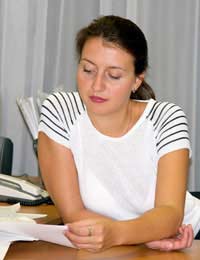Information about the Crown Court

Crown Courts exist in England and Wales. The Crown Court hears serious criminal cases such as rape and murder. You will often find that the Crown Court and county court are in the same building. The Courts Act 1971 established the Crown Court system in 1972.
Cases can be referred from other courts such as a magistrates’ court or even a youth court if the offences are serious enough. In civil cases the High Court has the same powers as the Crown Court. Trials in the Crown Court sit before a judge and a jury. The Old Bailey is a good example of a Crown Court and is also known as the Central Criminal Court. You can locate a Crown Court in your area on the HMCS website.
Duties of the Crown Court
The Crown Court has four basic duties:- To try cases of serious offences.
- To hear appeals from magistrates’ courts.
- To sentence defendants from magistrates’ courts.
- To carry out jury trials.
Crown Courts in Scotland
In Scotland the High Court of Justiciary is similar to the Crown Court in the rest of the UK in that it handles cases where serious crimes have been committed. A jury in Scotland consists of 15 people and not the usual 12 as in Crown Court trials in the rest of the UK.Crown Courts in Northern Ireland
The legal system in Northern Ireland is slightly different to that in England and Wales, but a Crown Court does exist and as in the England and Wales, handles serious crimes that a jury will be required to reach a verdict on.How a Crown Court operates
The layout of a Crown Court will be familiar to you as this kind of court is often used in television programs that feature a court case. A judge will sit on a raised platform at one end of the courtroom. The judge is usually addressed as ‘your honour’. When the judge enters the courtroom everyone stands.The clerk of the court sits in front of the judge’s bench facing the court. The clerk is usually the only person that can pass messages from the jury to the judge. The clerk is also in contact with other parts of the court building. The court will also include a sound recordist. All Crown Court cases are recorded just in case the trial goes to appeal.
The court will also have a reporter. This isn’t a member of the press, but the person that usually operates the stenograph that make a written recording of everything that is said in the courtroom.
A court usher will also be in the courtroom. It’s their job to pass any documents around the court. The barristers for the prosecution and the defence will also be in the courtroom. They stand whenever they are addressing the courtroom in general, the judge or the jury.
Behind the barristers will sit any supporting solicitors. These could be from the Crown Prosecution Service or police officers that are involved with the case being heard also sit here. The jury for the trial sits in a specific area usually near the defending barrister. Opposite the jury is the witness box.
The defendants sit in a dock with a custody officer near them. Behind the defendant is usually a small area for the public. Journalists must sit in a designated area especially for them. Outside of the courtroom itself is a smaller room where the jury retire to consider their verdict.
- The European Court of Human Rights
- The Supreme Court Explained
- Information About Parole Board Hearings
- Information About Mental Health Tribunals
- Information About Employment Tribunal
- What Happens at the Family Court?
- What Happens at the Coroner's Court?
- What Happens at an Immigration Hearing?
- Information about Small Claim Courts
- Information about the Magistrates court
- Information about the Royal Courts of Justice
- Information about the Youth Court


Re: Failure to Attend Jury Service
I am not doing jury service because of what I am a fish and I have no concept of crime
Re: Pre-Sentence Reports
Hello, Farheen. The correct answer to your question is, no. We can not shed any light on the reasons why you son's solicitor thinks that his…
Re: Pre-Sentence Reports
Hello Rodney, you went through the police interview wirhout a solicitor? Or used the duty solicitor? You've had your probation interview?…
Re: Pre-Sentence Reports
Hello, Farheen. It is not clear what you mean when you say that an incorrect law has been used. Incidentally, being unable to communicate is…
Re: Pre-Sentence Reports
My case was adjourned and I have now had my interview with the probation officer. Given that most magistrates courts take the PSR and…
Re: Pre-Sentence Reports
My son has a pre sentence report interview. My son cannot communicate and has mental health issues. The solictor has will submit an appeal…
Re: Failure to Attend Jury Service
I did jury service in Cardiff Crown years and years ago. I was called into court on the jury. I had 3 cases all dead boring. I…
Re: A Guide to Court Orders
Please please if there’s any advice,support or anything else you can help with please let me know, I fled the former marital home in…
Re: How to Complain About the Courts and Police
I wish prosecute Surrey Police. I require legal aid.
Re: Pre-Sentence Reports
Hello Emz, I can understand family and health questions. They seem quite reasonable. The focus on eye problems is a bit of a mystery to me,…